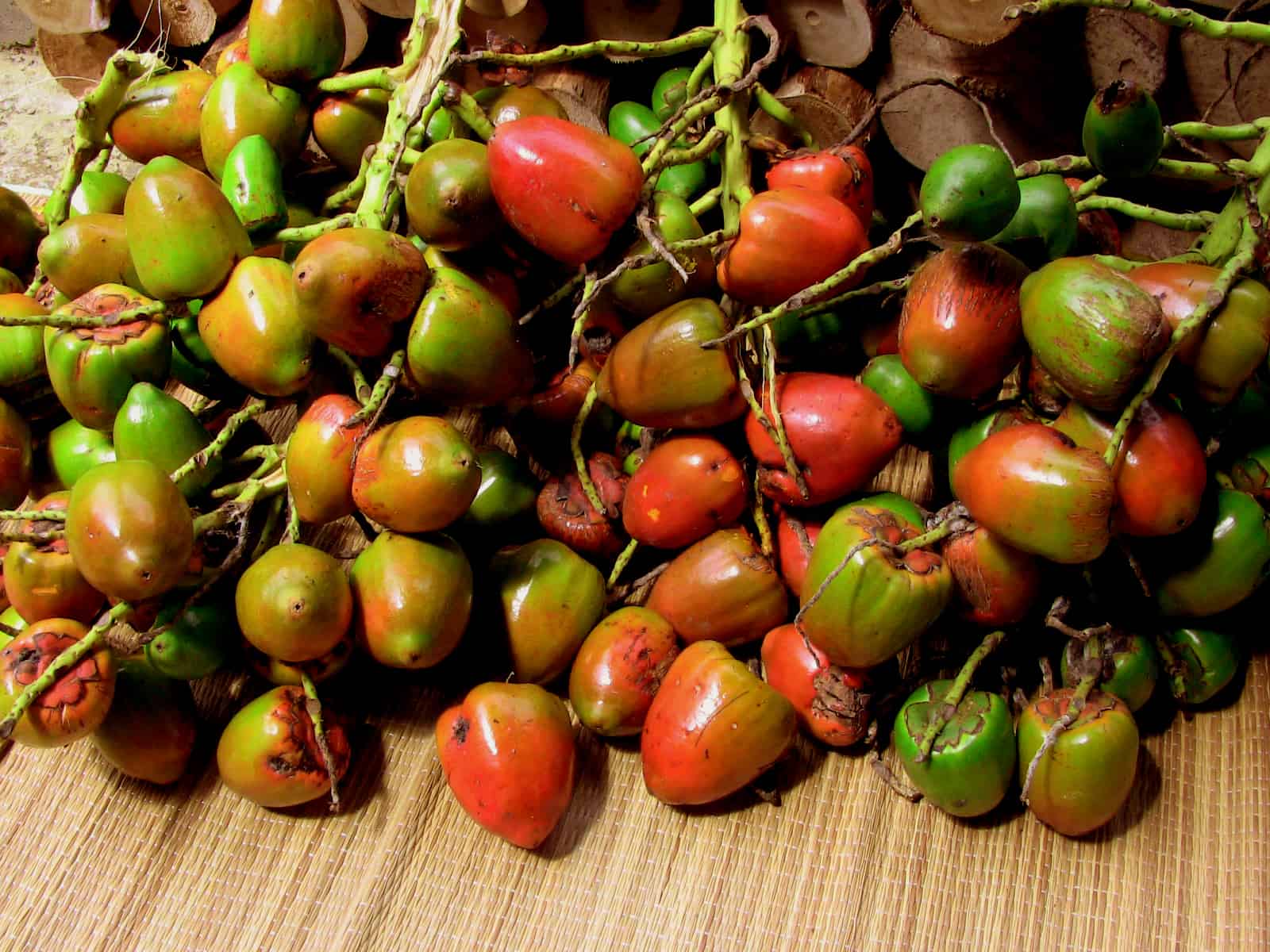Few plant species can be considered a marvelous discovery that has transformed human culture.
Bactris gasipaes is definitely one of those rare cases in which a plant provides a wide variety of products for different uses. The peach palm supplies two of the most delicate and exquisite vegetable products Costa Rica exports to the world: peach palm (pejibaye) and heart of palm (palmito).
It is thought that plantations already existed by the time Columbus arrived on Costa Rica’s Caribbean island of Uvita in 1502, which was appropriately named La Huerta (The Vegetable Garden). It wasn’t until 1541 to 1546 that the first reference to the peach palm appeared in official colonial records, when Spanish settlers entered the southern hills of the Coaza Cacique territory in today’s Talamancas, an area in which a tree locals called “pijibay” (pronounced pe-hee-BYE) was more than prominent and utilized by the locals in many ways.
Conquerors discovered how not only the fruit but also the core of the palm was consumed, and that the palm fronds were used for thatch and the tree trunks for timber. At that time, the peach palm was cultivated throughout southern Mexico and Central America to the Peruvian and Brazilian Amazon regions. Although today the peach palm grows in most tropical areas of the globe, its potential production scale is still in its infancy.
Costa Rica and Brazil are the leading exporters of peach palm products. Pejibaye and palmito are considered delicacies sent abroad to gourmet markets in the industrialized world. The pejibaye itself is so unique in taste that it has been described as somewhere between a sweet potato and a water chestnut, with a unique bright orange color and nutty texture.
It is a versatile ingredient that can be cooked in many ways, either savory or sweet. Flour, starch and oil are extracted from the flesh for both industrial and domestic uses. Palmito is one of the crispiest and delicious of the edible palms; its rich aroma and consistency are comparable to those of tender bamboo shoots.
Chefs from around the globe continue to be inspired by these two ingredients, creating a melting pot of techniques, recipes and ideas. Their versatility means they are adaptable to almost any kind of cuisine, style, technique or flavors. Commonly found in gourmet markets of New York, London and Tokyo, their prices in these far-off locales certainly categorize them as “elite” ingredients, deserving of regal treatment.
Costa Ricans have a keen taste for pejibaye and palmito, and are quite discerning when it comes to quality. Surprisingly, however, the use of pejibaye in local gastronomy is rather shy, and it is usually served simply as boiled peach palm with mayonnaise or in soup or bread. The same goes for heart of palm, usually appearing in salads and in the quintessential Tico pie, pastel de arroz con palmito, a creamy, buttery, cheesy baked dish with simple flavor but lots of character.
For this recipe, I chose to combine the two amazing products from this versatile tree into one recipe, fusing their flavor and providing a Caribbean twist.
Pejibaye and Palmito in Mocha Mexicali Sauce with Cumin Rice
Ingredients:
- 12 pejibayes, cooked, peeled and sliced
- 1 lb mixed peeled and chopped tubers (cassava or manioc, taro, sweet potato, etc.)
- 200 g chopped chicken, pork, beef or soy substitute
- 1 onion, finely chopped
- 1 cup sliced palmito
- 3 tbs olive oil
- 1 garlic clove, minced
- 1 tsp grated ginger
- 1 tsp tomato paste
- 1/2 cup chopped tomatoes
- 1 tsp chipotle pepper sauce
- 2 tbs lemon juice
- 2/3 cup strong coffee
- 1/2 cup stock or water
- 1/3 cup brown sugar
- 2 tbs Worcestershire sauce
- 1/4 tsp grated nutmeg
- 1 tsp cinnamon
- 1/2 tsp ground cardamom
- 1 tsp ground cinnamon
- 1/2 tsp ground allspice
- 2 tsp cocoa powder
- 1/2 tsp salt
- Pepper to taste
Directions:
In a large pan over medium heat, sauté onions in the olive oil for five minutes. Add meat, ginger and garlic, and brown for two minutes. Incorporate all remaining ingredients and bring to a boil. Lower heat to a minimum and simmer for a few minutes until most of the liquid has evaporated and the vegetables are soft. Adjust flavors and serve accompanied with steamed cumin rice. (Makes five servings.)
Steamed Cumin Rice
Ingredients:
- 2 cups long-grain white rice
- 2 tbs cumin seeds
- 2 garlic cloves, minced
- 1 tbs vegetable oil
- 1/2 tsp salt
- 3 cups water
Directions:
In a medium-sized pot, cook garlic and cumin seeds in oil over medium heat for two minutes. Add rice, stirring constantly for one minute. Incorporate water and salt, and bring to a boil. Reduce to a simmer, cover and cook for exactly 15 minutes. Remove from heat, fluff with a fork and put aside.
¡Buen provecho!






